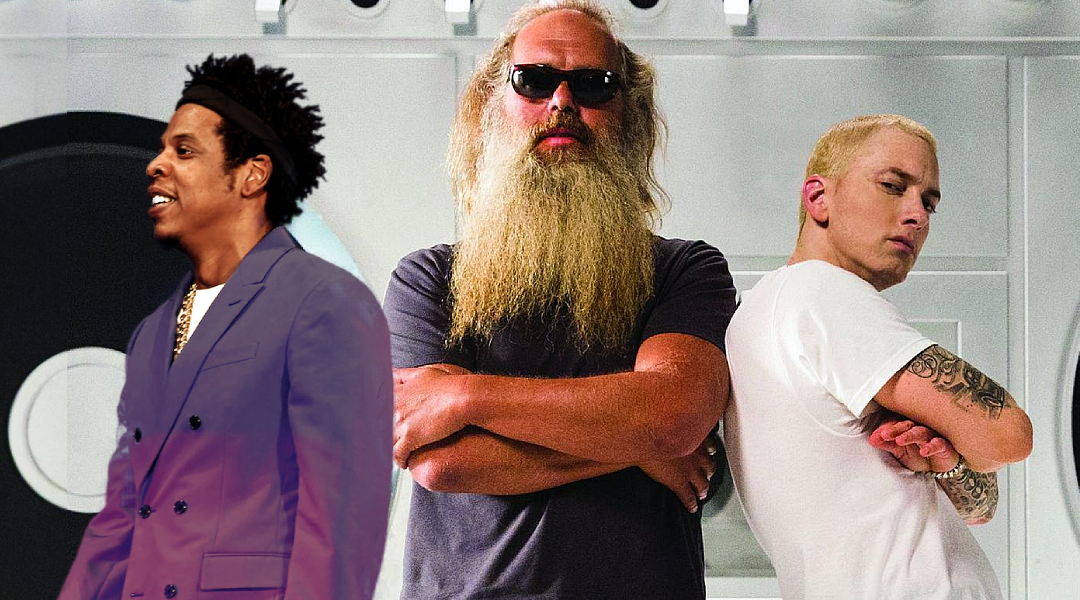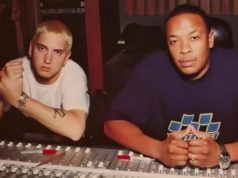The most important producer of a generation, Rick Rubin, worked with the most important act in every genre. Working with Eminem was very different from working with Jay-Z.
The co-founder of Def Jam Recordings came to the Joe Rogan Experience podcast and shared some crumbs of wisdom from his massive experience in the music industry.
Discussing different approaches to working in the studio, Rick Rubin avoided giving more weight to bold improvisation over meticulous planning or vice versa. To illustrate his point, Rick referred to recording with both Eminem and Jay-Z. Marshall worked with Rubin on “Berzerk”, “Love Game”, and “Walk on Water”, and Hov recorded “99 problems” in Rubin’s studio. They are different, but that’s not the point, Rubin says:
There is no right and wrong way, you just have to find your way. Whatever works for you. I’ve worked with artists who do it in completely different ways. Eminem, he’s always writing in the book, always writing, all the time. And he’s always got notebooks, writing. I asked him if these were rhymes to use, and he’s like, “No, no. 99 per cent of what I write I’ll never use. It’s to stay engaged in the process of writing and finding new ways to write. So, when I need it, it just comes”. And then, Jay-Z doesn’t write anything down. He just listens to the beat and hums, and then goes on the mic 20 minutes later and just says a whole complicated verse. I don’t know how he can remember it. Much less have just written it and just be able to do it free. It’s crazy. When we were recording “99 Problems”, I played the beat for him. He likes the beat. Then he says, “Okay, just keep playing it”. Then he sits in the back of the control room on the couch, and you hear him humming. In 15 to 20 minutes, he jumps like, “Okay, I got it”. And then he goes in with no paper, no writing, nothing, and delivers the whole thing. And then he does it again. The words would be the same, but the phrasing is different. It’s more like an improvisational solo when you play the same melody putting emphasis on different parts of it. It’s not the same. The words are the same, or close to the same, but the feeling of it and the rhythm of it changes when he does it again. And he does it a few times until, like, “Okay, that one is good”.
Watch the segment below:












